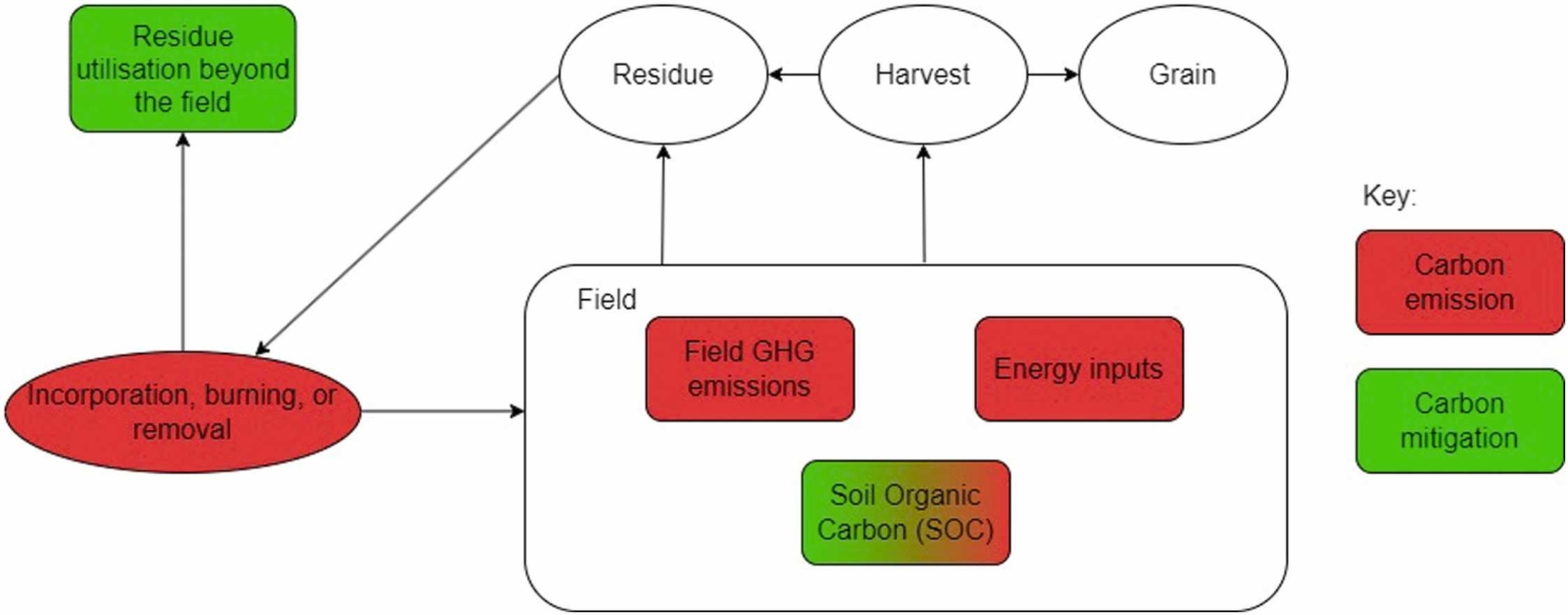February 28, 2024 | Agriculture, Ecosystems & Environment | Source |
Introduction: Despite existing mitigation efforts, integrated approaches addressing system-wide emissions—including soil organic carbon (SOC), energy use, and residue management—remain underexplored. This systematic review, conducted by researchers from the University of California Davis (USA), IRRI (Philippines), and INIA Uruguay, synthesizes scientific evidence across four components using a net system emissions framework. The study assesses cross-component effects and highlights effective mitigation opportunities critical for sustainable rice practices in SEA amidst growing global climate commitments.
Key findings: The study identifies key opportunities for mitigating net GHG emissions in SEA rice production across four components:
- Field GHG Emissions: Effective mitigation strategies include alternate wetting and drying (AWD) irrigation, mid-season drainage, straw removal or burning, and biochar application. These methods significantly reduce CHâ‚„ emissions but may increase nitrous oxide (Nâ‚‚O) emissions or lower SOC, requiring balanced management.
- Energy Inputs: Synthetic nitrogen fertilizers and fossil fuels are major emission sources. Mitigation strategies involve optimized fertilization through site-specific nutrient management, alternative nutrient sources like biochar, and reduced water-intensive irrigation methods such as AWD.
- Residue Utilization: Removing rice straw from fields to prevent open burning significantly reduces GHG emissions. Opportunities include repurposing residues for energy production, such as electricity or bioethanol, which offsets fossil fuel emissions and enhances energy efficiency.
- Soil Organic Carbon (SOC): Practices like biochar application, residue incorporation, and compost enhance SOC stocks, offsetting emissions. Biochar shows significant soil carbon gains, but high application rates may present practical challenges. Long-term research is needed to understand the combined effects of practices like drainage and straw removal.
The review emphasizes the importance of integrated approaches that address cross-component synergies and trade-offs. While field GHG emissions and SOC changes offer the largest mitigation potential, strategies like water and carbon management often involve trade-offs, such as SOC reductions from drainage. Long-term research is crucial to optimize integrated practices, balancing emissions reductions and SOC preservation effectively.

Figure | Schematic of net system emissions conceptual framework guiding the literature search and review (each colored box represents a pool of C flux, with red representing emissions and green representing mitigation).





